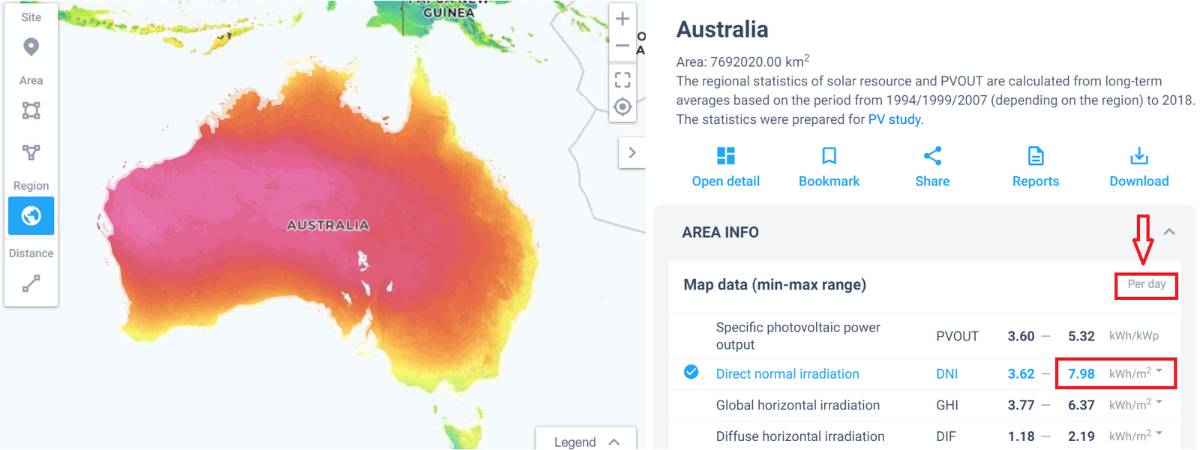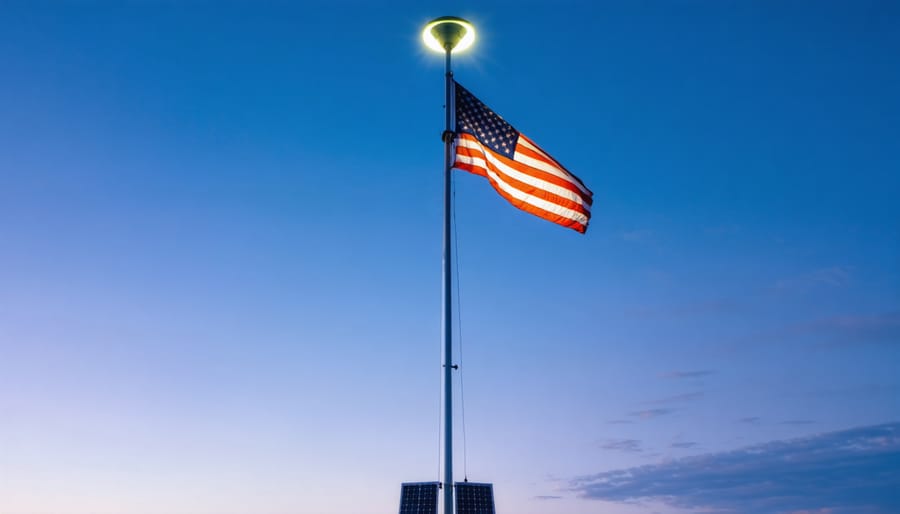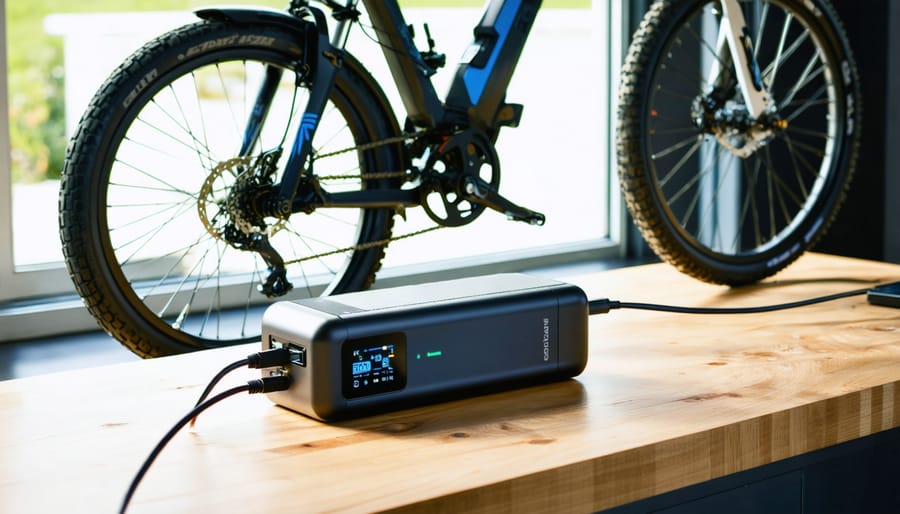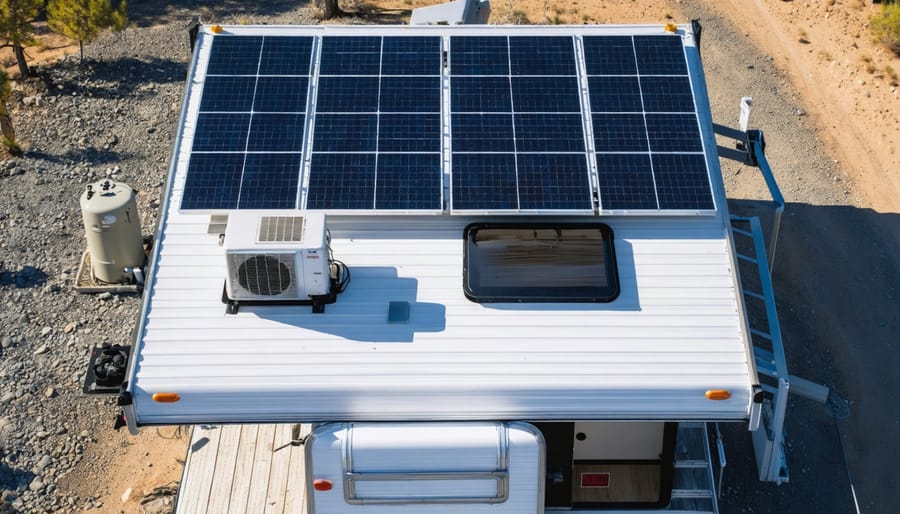How Many Solar Panels for Food Truck?
Updated:

If you want to know how many solar panels you will need for your food truck, you need to understand that A 1 kW solar system may, on average, provide about 4-5 kWh of electricity each day. Hence, a solar power system with a 4-5 kW capacity would be needed for a food truck with a daily energy usage of 20 kWh. To produce 1 kW of power, four 250-watt standard solar panels would be required.
However, various factors influence the food truck’s power usage and the solar system’s output. The amount and type of cooking appliances, lighting, and other electrical devices used in food trucks, refrigeration systems, location, and working hours all affect how many solar panels food trucks require to operate.
Key Considerations for Calculating the Right Number of Solar Panels
Before making any solar panel investment, it is important to decide what kind of food truck (breakfast truck, coffee truck, lunch truck, or dinner truck) you will have. You can estimate how much power you need by considering your food truck’s size and the types of electrical equipment you’re putting in it.
Cooking Equipment
Food truck owners may use a variety of cooking appliances, and each appliance uses a different amount of power. For reference, a commercial oven could use up to 10,000 watts per hour, whereas an electric fryer uses between 3,000 and 5,000 watts. Other kitchen appliances like griddles, grills, and steamers also use a lot of electricity. For a more upscale food truck, multiple large grills are required as well as some solar dehydrators.
The first step is to list the essential cooking equipment required to run a food truck business. Get the technical specification sheet or appliance tag nameplate to determine the equipment’s electrical consumption.
Lighting
A food truck’s power usage may vary depending on the number and type of lights it uses. For example, LED lighting requires fewer kWh than halogen lighting. Lights on food trucks may consume between 300 watts to 500 watts of power.
Other Equipment
Food truck owners might also use portable solar panels for additional electrical devices like air conditioners, POS (point of sale) systems, music systems, and cash registers. When determining the number of solar panels needed, the energy consumption of all your appliances must be considered to power your food truck appliances.
Location and Work Hours
The location of solar-powered food trucks is crucial because the solar power available in Australia and the UK differs significantly. Work time is another factor. If your solar power food truck focuses on serving dinner, you must conserve energy for the evening, which calls for solar generators and more batteries.
You can assess the available solar power by using the global solar website. A tool like the PVWatts Calculator from the National Renewable Energy Laboratory (NREL) can be useful for estimating daily energy consumption. Use this calculator to estimate daily energy consumption and output by entering information like solar panel orientation, location, and equipment wattage.
Backup Power Equipment
Even though your solar food truck is placed in a location with continuous direct sunlight, It is strongly advised to have a backup generator in case an unexpected event occurs. You do not want to be stranded in a storm without electricity, unable to serve your starving customers because you don’t have a backup generator. In every business, but especially for somebody working in the service industry, planning for the worst-case scenario is imperative.
Budget
A project like installing solar panels will take a while to pay for themselves, so you must be able to finance the cost for some time before the solar panels start to pay for themselves. It is also crucial to consider the budget of any expansion plan before investing.
Total Power Consumption Calculation
The energy consumption of all the truck’s equipment must be added to determine how much electric power is required for the food truck. Let’s consider a gourmet food truck that employs the types of equipment listed below:
(A compact refrigerator) + (Sign Board) + (LED illumination) + (An electric fryer) + (Music system) + ( Commercial oven) + (Air conditioner) = Food truck’s power consumption
This food truck’s overall daily power usage would be 800 + 400 + 600 + 4000 + 200 + 8000 + 3000 = 17,000 watts.
Solar Power Peak Hours Calculation
If a gourmet truck is in Australia, working hours are from 10 am to 5 p.m. Calculate how many solar panels are needed to power this gourmet truck.
Food truck’s power consumption per day = 17KW/ day (Kilowatt per day).
Choose Australia as the location on the Global Solar website, change the data set to “per day,” and then use the DNI (“Direct Normal Irradiation”) value in the calculation. DNI is 7.98 KWh/m2, which is also referred to as “peak sun hours.”

Solar system losses can go over 30%. To stay in the safe zone, take a 40% loss. Add 40% of the losses by multiplying it by the daily energy consumption and dividing it by the peak sun hours. Use higher-quality panels to produce more energy.
17 KWh x 1.40 = 24 KWh (Kilowatt hours)
Daily power consumption = 24KWh / 7.98 (peak sun hours) = 3 KW = 3KW
Solar panel wattage = 250 Wp (per panel), Total number of panels = 3,000/250 W = 12 solar panels
So, How Many Solar Panels for Food Truck?
Twelve solar panels can provide sufficient energy for the food truck during adequate sunlight. But what about off-peak sun hours? How will you get enough energy to meet your power needs on rainy days or when it’s dark outside? The PV system runs the food truck’s kitchen when it is in business, but if there is a higher need for electricity, it starts the generator to recharge the battery. After the generator has finished recharging the battery, it may be turned off so that PV can power the food truck again.
Battery Sizing Calculation
Battery type directly affects the estimation of battery size because DOD (depth of discharge) varies for each battery. For our solar-powered food truck, we will use lithium-ion batteries. Although expensive, lithium-ion batteries offer a good depth of discharge. Daily battery storage = daily energy consumption/DOD% of lithium-ion batteries.
Daily battery storage = 17 KW per day /0.9= 132 KW per day
For a battery backup, it is typically recommended to keep backup batteries that can provide power for up to five days. This number is based on working hours. You’ll need less if you work between the hours of morning and afternoon. You have to raise this number if you only work at night. Total battery power storage can be calculated by multiplying daily power storage by autonomy days. In this case, two days are considered. Total battery storage = 17 KWh (per day) x 2 days = 34 KWh
To calculate how many batteries are required, divide the battery storage by the battery bank voltage. Battery voltage depends on the inverter’s specs.
Total battery bank capacity = total battery storage/battery bank voltage = 34 KWh * 1000/48 V = 708 AH. Let’s take 250 Ah batteries to power your food truck.
Total battery bank capacity/single battery capacity = 708 AH/250 AH = 2.8 = 3 batteries. So a total of 3 Lithium-ion 250 Ah batteries will power your food truck exclusively. These batteries can be connected in series or in parallel. The number of solar panels and batteries can vary with food truck wattage.
How to Install Solar Panels on Food Trucks?
Once everything is calculated and procured, install the solar panels securely on the roof of the food truck. Ensure the solar panels are angled properly to receive the most daylight. The food truck must have a suitable place for the battery bank to be accessed directly and maintained. The required wiring must also be installed to link the food truck solar panels to the battery system.
The Cost
Installing solar panels and improving your system will cost you a few thousand dollars if you already have a food truck. Depending on the size of your food truck or your electricity requirements, the amount may exceed $15,000 or even more in the case of batteries. But remember that investing in solar panels will eventually help you save money and fulfill your energy requirements. After the system is established, you will save money nearly daily. Comprehending your business’s service life will be essential to deciding if those start-up expenditures are worthwhile.
It looks like this food truck is solar-powered, refueled, and ready to go! Since it is solar-powered, you may indulge guilt-free while taking in the sunlight.
A Practical Solution
Because of technological advances, solar panels are used to meet energy needs in more places than just houses. Truck owners can make extra money by trading excess energy with solar companies. Most food trucks operate on a gas-powered generator, which is hazardous to the planet. You will be taking a significant step towards achieving environmental sustainability and reducing your carbon footprint if you use solar panels instead of fossil fuels. Shifting toward solar energy will benefit you in the long term.










